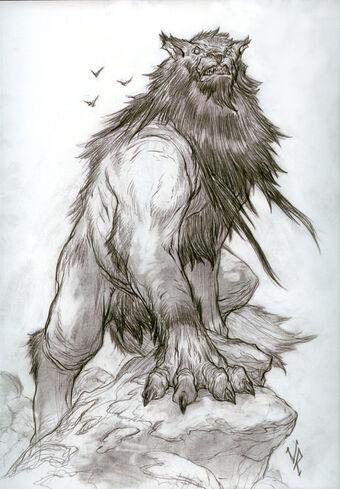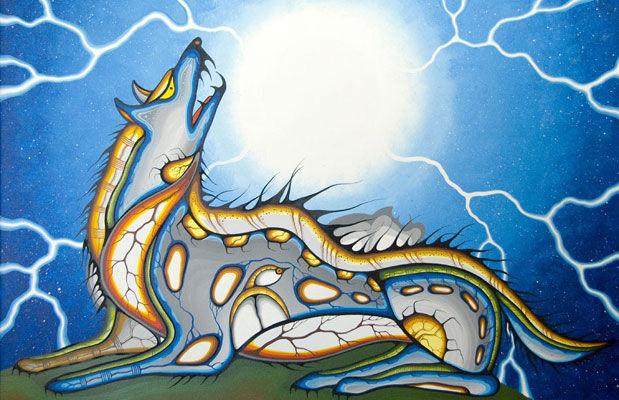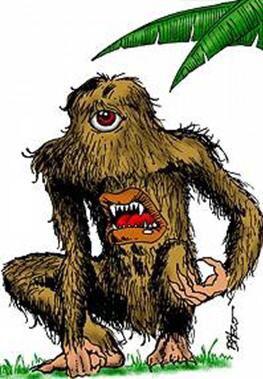
3 minute read
3. Amarok
In some tales, a person captures or kills an amarok. The myth of the Amarok was most likely originated from the tale ancient Eskimos told about direwolves.
Amarok
Advertisement
Amarok (or Amaroq) is the name of a gigantic grey wolf in Inuit mythology.
It is said to hunt down and devour anyone foolish enough to hunt alone at night. Unlike real wolves who hunt in packs, Amarok hunts alone. It is sometimes considered equivalent to the Waheela of cryptozoology.
In his book Tales and Traditions of the Eskimo,Rink recounts several folk legends that feature the Amarok.
In one tale, a persecuted and physically stunted boy seeks to increase his strength. When he calls out to the lord of strength, an Amarok appears and wrestles him to the ground with its tail. This causes a number of small bones to fall from the boy’s body. The Amarok tells the boy that the bones had prevented his growth; he instructs the boy to return daily in order to develop his strength. After several days of wrestling with the amarok, the boy is strong enough to overcome three large bears, thus gaining him the esteem of his village.
In another story, a man mourning the death of a relative hears reports that an Amarok is nearby. He and a relative go in search of the Amarok. They find instead her pups, and the mourner kills them all. The mourner’s relative becomes frightened. The two retreat to hide in a cave. Looking out, they see the adult Amarok returning to her pups, carrying a reindeer in her mouth. When the Amarok fails to find her offspring, she hastens to a nearby lake and drags a humanoid form from the water; at that moment, the mourner collapses. The Amarok, “from which nothing remains concealed”, took the mourner’s soul from his body. and some informants told Mesquita that it emitted an “extremely foul odour from its belly”.


David Oren pieced together a description of the mapinguari in 1993, based on interviews with a number of claimed eyewitnesses. From their accounts, he described the mapinguari as a man-sized animal, no more than a metre and eighty centimetres long, with long reddish fur, backwards feet, and a monkey-like face. Later, in 2001, after speaking with more witnesses and seven hunters who claimed to have killed specimens, Oren was able to give a presumably more accurate description of the animal.
Mapinguari
According to Brazilian stories, the Mapinguari or Mapinguary was once an Amazonian shaman who discovered the key to immortality thousands of years ago. He angered the gods and was severely punished as to his discovery, which forced him to be transformed into a wandering, hairy beast for the rest of his life.
Due to application of the name to what seem to be different cryptids, modern sightings show the beast as a giant sloth, whereas older sightings described it as an ape-like creature. Many cryptozoologists speculate that the Mapinguari is either a mylodontid or a megalonychid, medium-sized giant ground sloths from the Ice Age that lived in the area. The creature also supposedly has a horrid odor, which supposedly can knock a man unconcious. It is said to sometimes be a humanoid creature with a mouth in the middle of its stomach. It is sometimes said to have one eye, long claws, caiman skin, backward feet and a second mouth on its belly. Some samples of Mapinguari “hair” and “droppings” were collected by investigator David Oren, but turned out to be the deposits of giant anteaters and the hair of small rodents.
Initial descriptions of the mapinguari’s appearance were vague. It was described as a primate, dark and thickset and bipedal, but still very agile. The traditional, folkloric depiction of the mapinguari is that of an ape- or man-like creature. It was described to investigator Paulo Aníbal G. Mesquita as a flat-snouted quadrupedal animal (which could nonetheless assume a bipedal gait) with caiman-like skin, long brown fur, a flattened snout, and robust claws. When startled it was said to rear up on its hind legs and show its claws,







